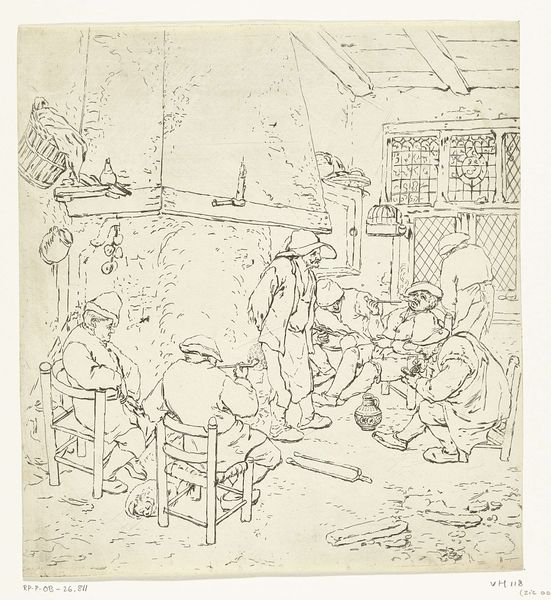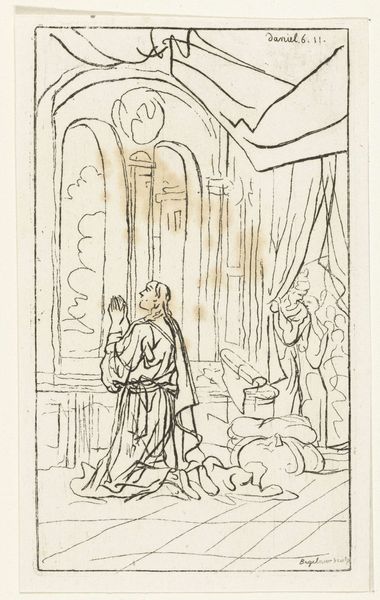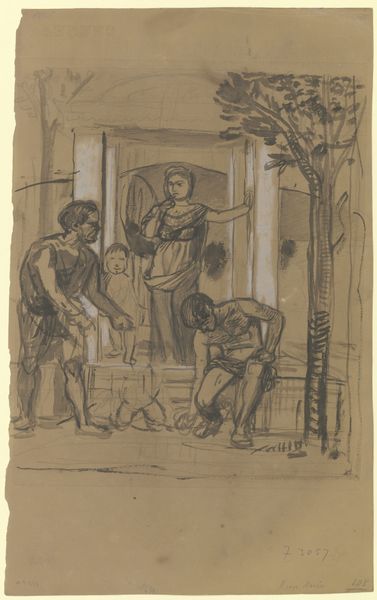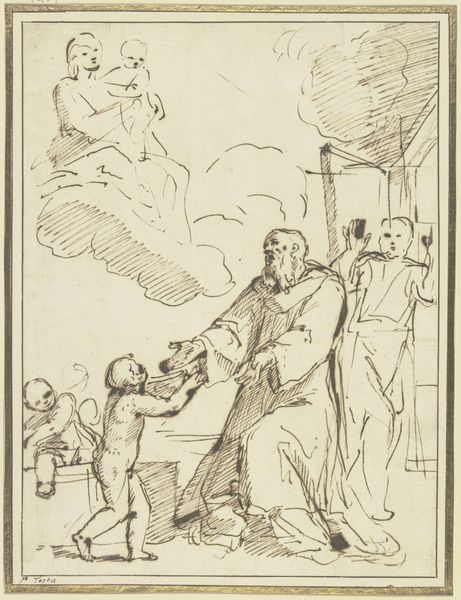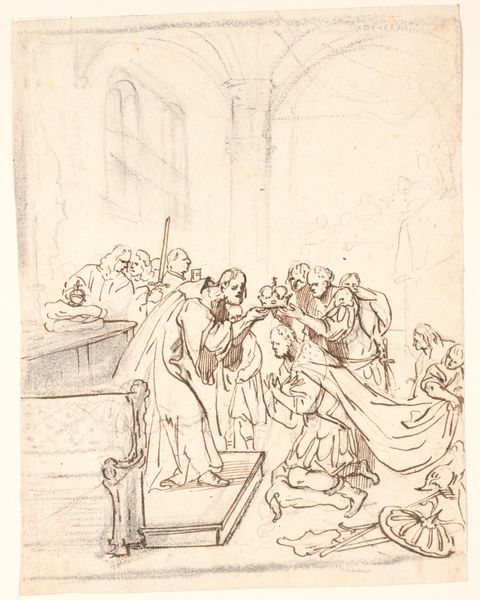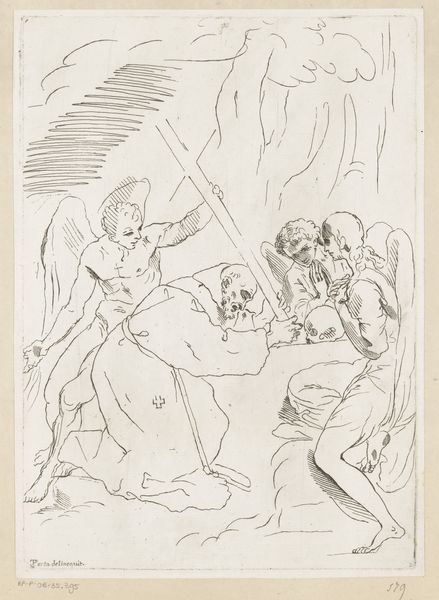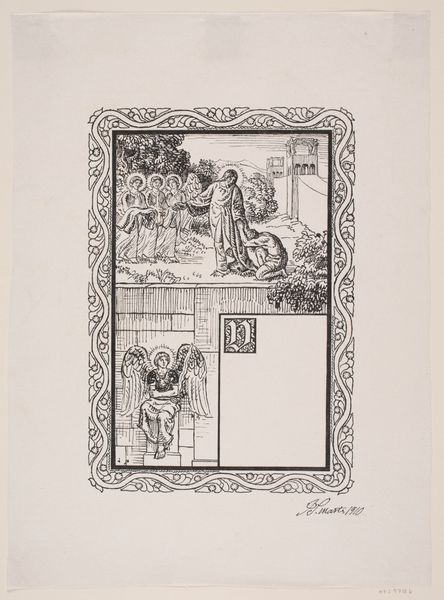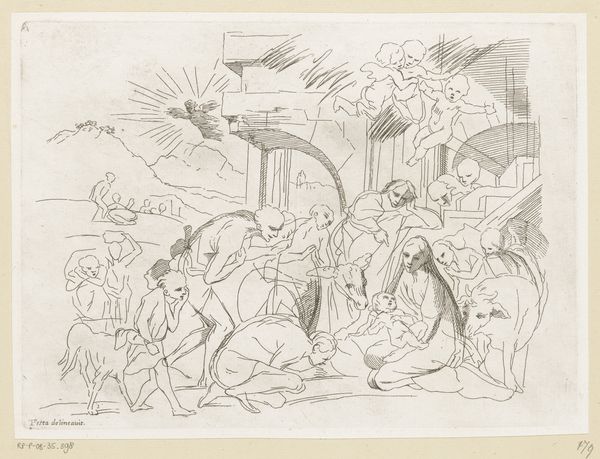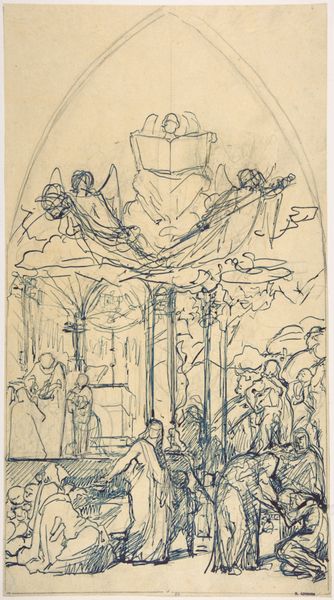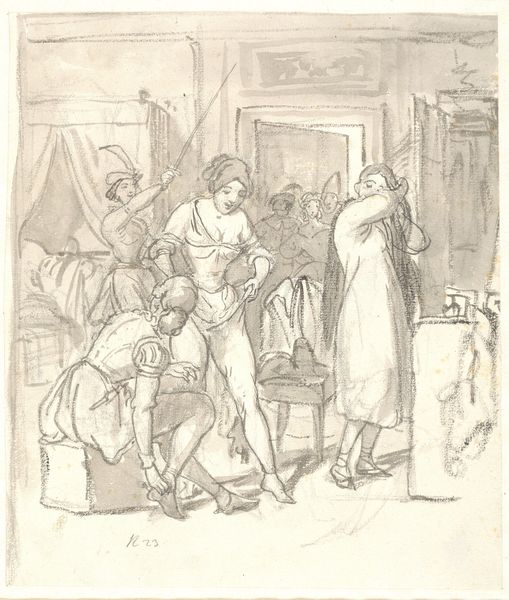
Spotprent op het op straat zetten van de gipsen beelden in het Oudheidkundig Museum te Leiden, 1864 1864
0:00
0:00
drawing, print, paper, ink
#
drawing
# print
#
figuration
#
paper
#
ink
#
cityscape
#
history-painting
Dimensions: height 275 mm, width 215 mm
Copyright: Rijks Museum: Open Domain
Curator: Johan Michaël Schmidt Crans crafted this drawing and print titled "Spotprent op het op straat zetten van de gipsen beelden in het Oudheidkundig Museum te Leiden, 1864," or "Satirical print on putting the plaster statues on the street in the Oudheidkundig Museum in Leiden, 1864." The piece is made using ink on paper. Editor: My initial response is that it feels both humorous and unsettling. The contrast of classical forms cast out into what seems like a contemporary street is visually jarring. The artist also deployed what seems to me to be a rather limited spectrum of grays and whites, which, while not realistic, definitely plays up this print's overall contrast between dark and light values. Curator: Absolutely. Contextually, this piece critiques the displacement of plaster statues from the Museum of Antiquities in Leiden. This reflects a tension between classical ideals embodied by the statues and the evolving needs of institutions, particularly the Rjiks Herbarium needing space—revealing a bureaucratic dispossession through the satirical depiction. Editor: I see what you mean; how does the composition serve this critique? The discarded statues at the right edge certainly speak to a kind of abruptness in this supposed decision. The contrast is clear and even somewhat crude. Curator: Note the child-like figure at the bottom, seemingly guiding or directing the exodus; he might symbolize naivety or perhaps a more subtle manipulative force, especially in light of the accompanying text—likely adding a layer of socio-political commentary aimed at specific figures involved in the decision. It may very well be read as social critique wrapped in historical allegory. Editor: Interesting—I hadn't quite made the connection with that figure down there at the lower left! It introduces an entirely new element into this image—an almost puppet-master effect. If anything, Crans seems to excel here in using both symbolic visual shorthand combined with direct, unflinching draftsmanship. Curator: The piece encapsulates institutional shifts within Leiden at the time and also reflects a larger trend of reevaluating the importance of classical art versus scientific endeavors, thus commenting on resource allocation, and also reflecting social values through a period undergoing transformation. It provokes discussions about preservation and adaptation through the print media and underscores an intersectional view on historical change. Editor: After unpacking it all, this piece highlights just how the simple application of contrasting dark strokes with light backgrounds creates not just visual tension but also functions as symbolic counterpoint within the print. This piece by Crans definitely prompts reevaluation.
Comments
No comments
Be the first to comment and join the conversation on the ultimate creative platform.
